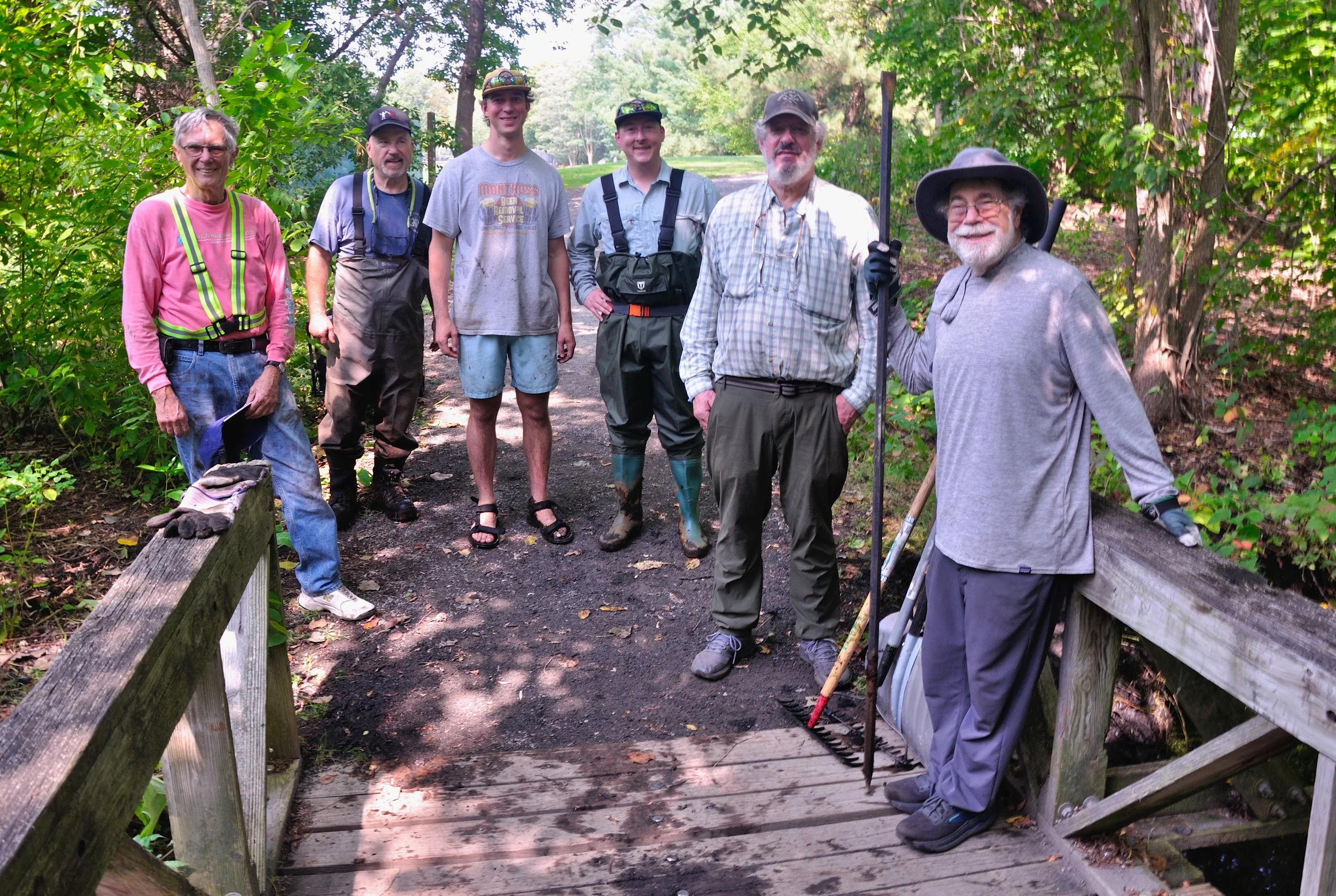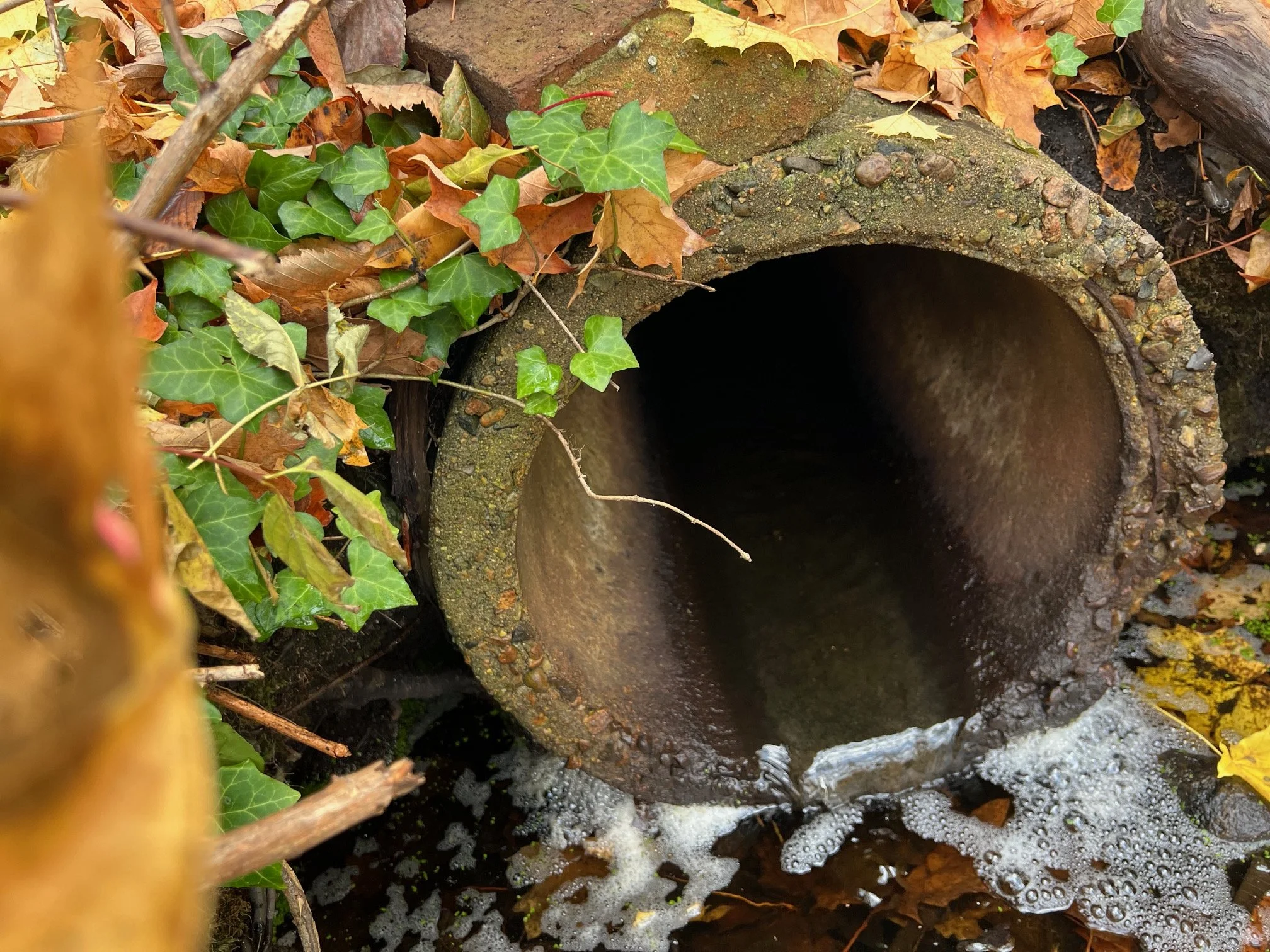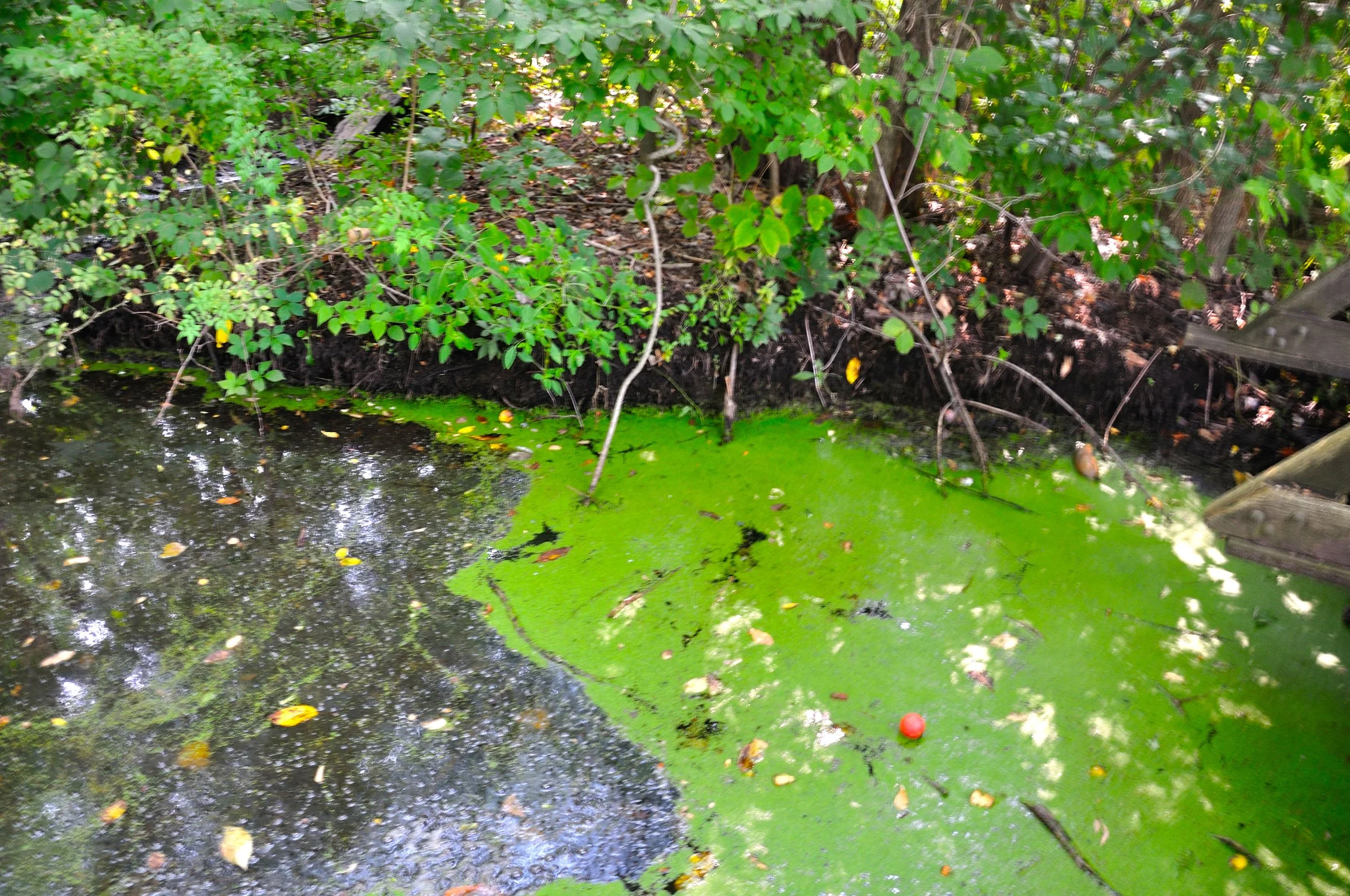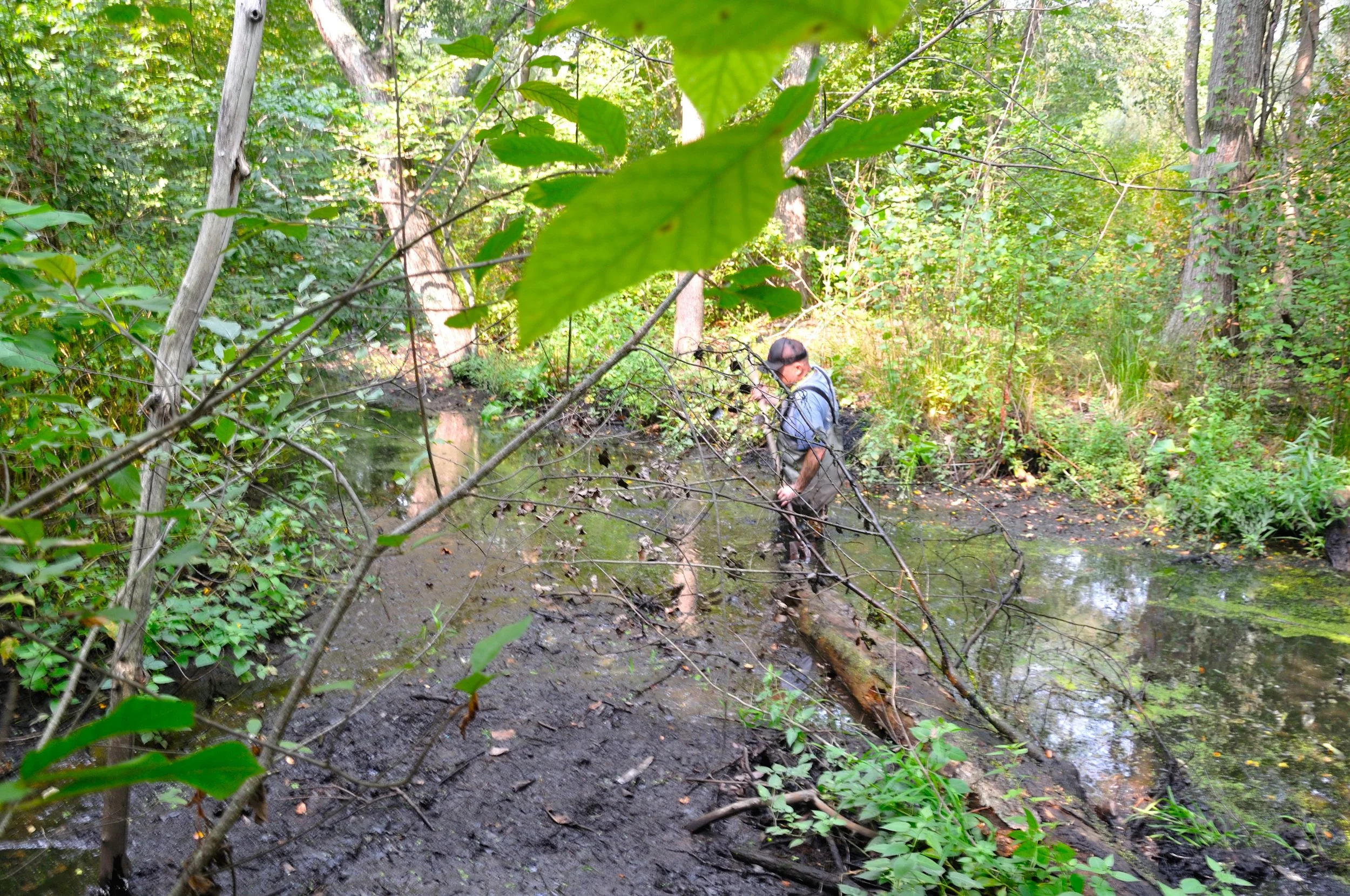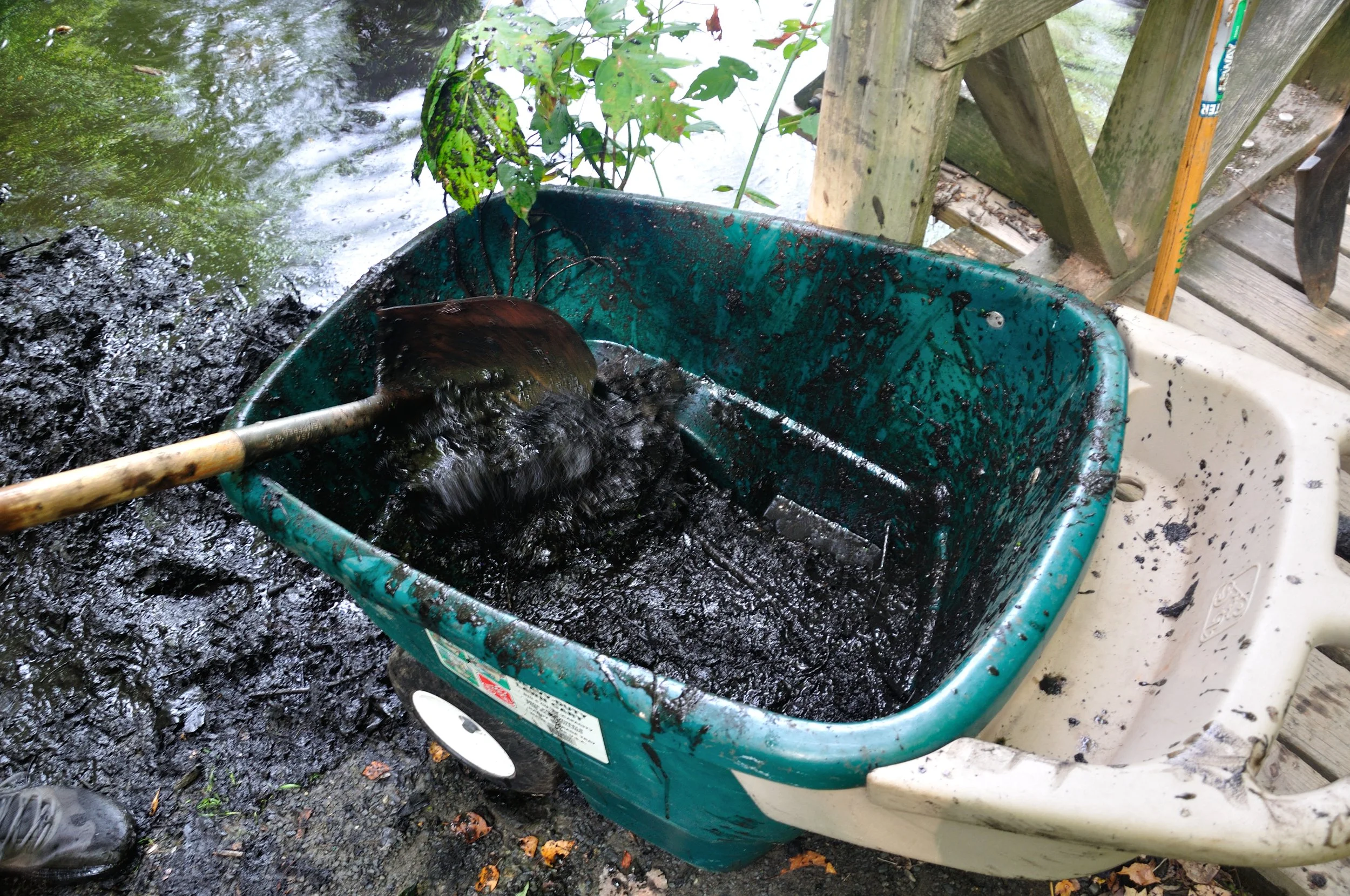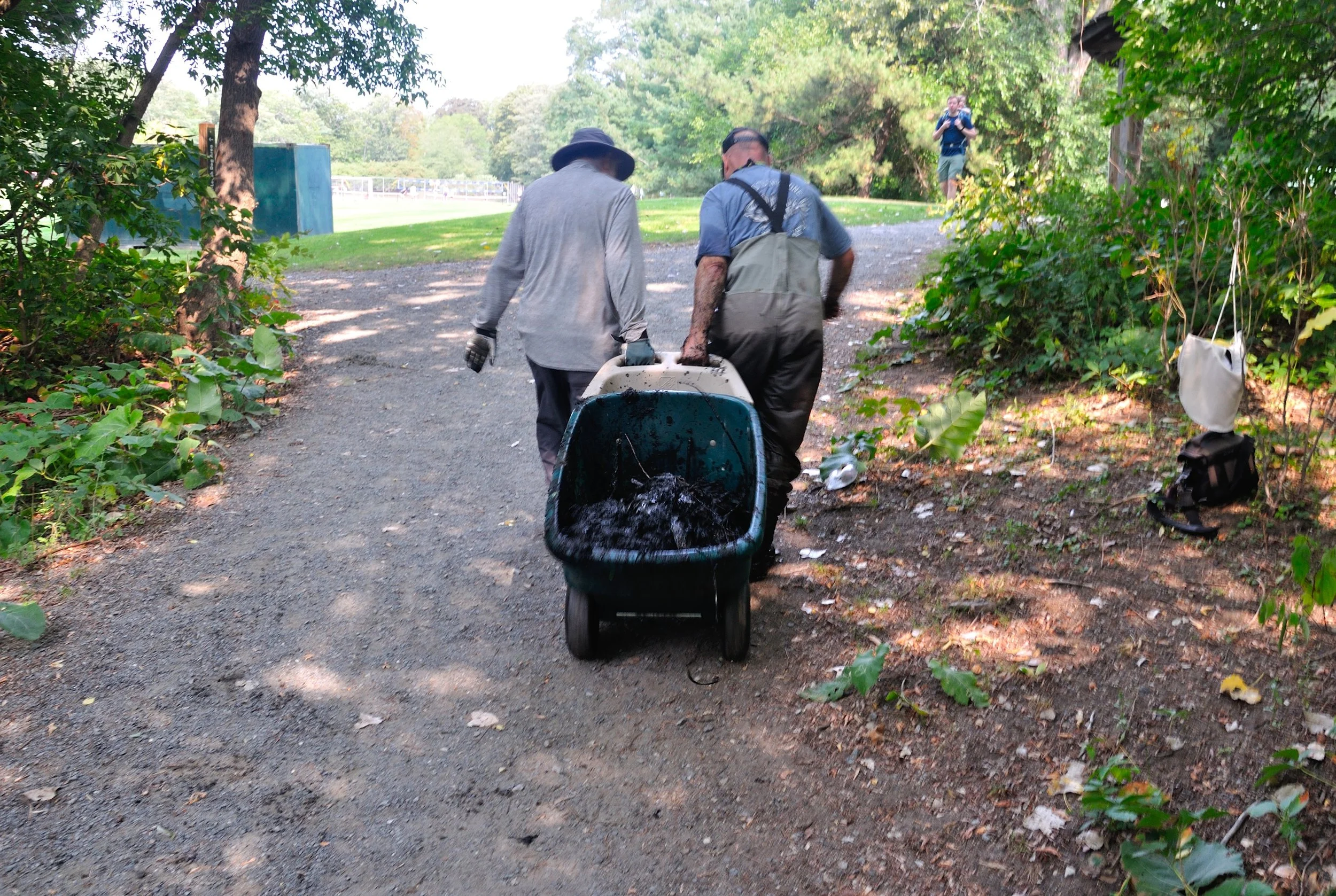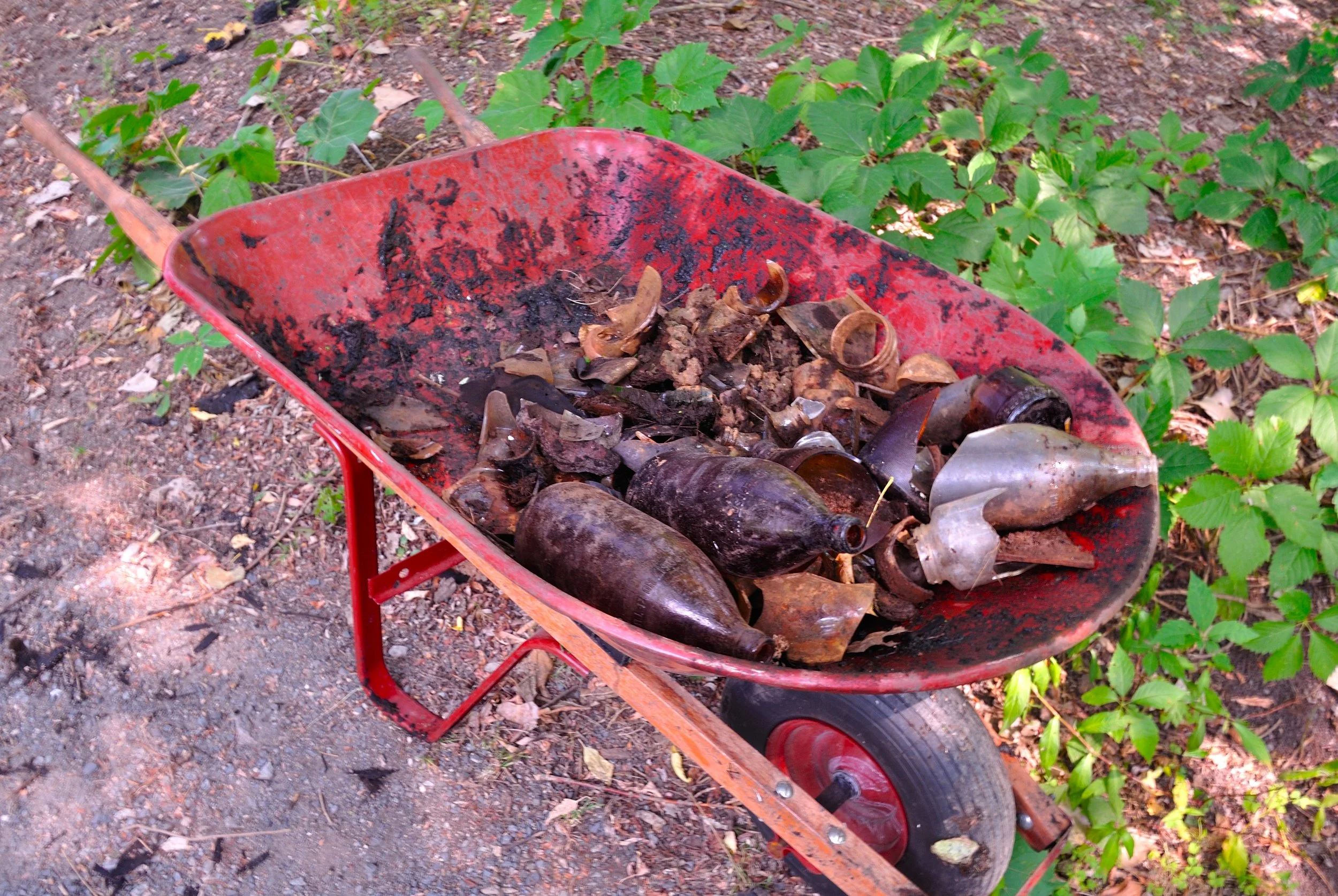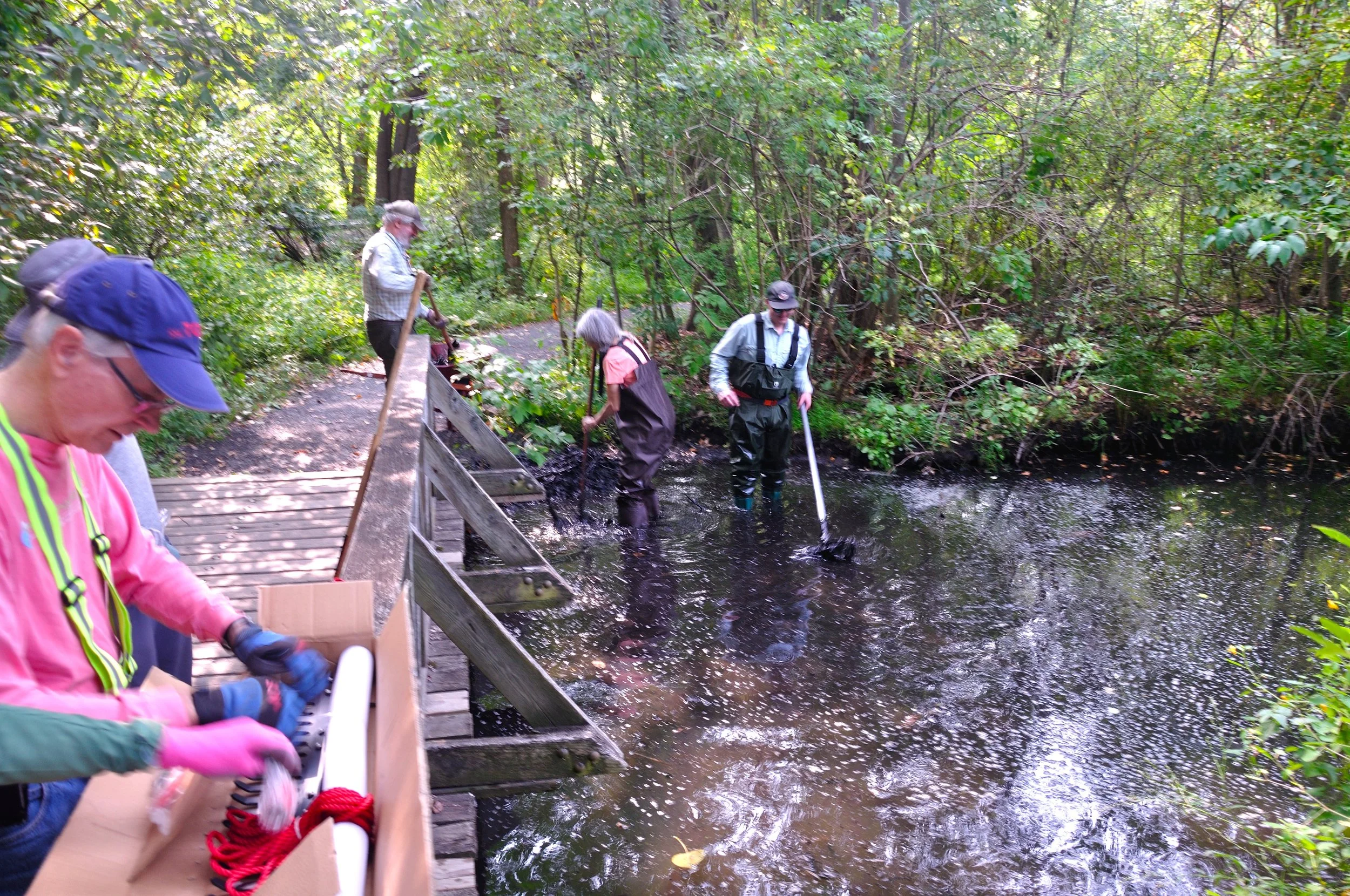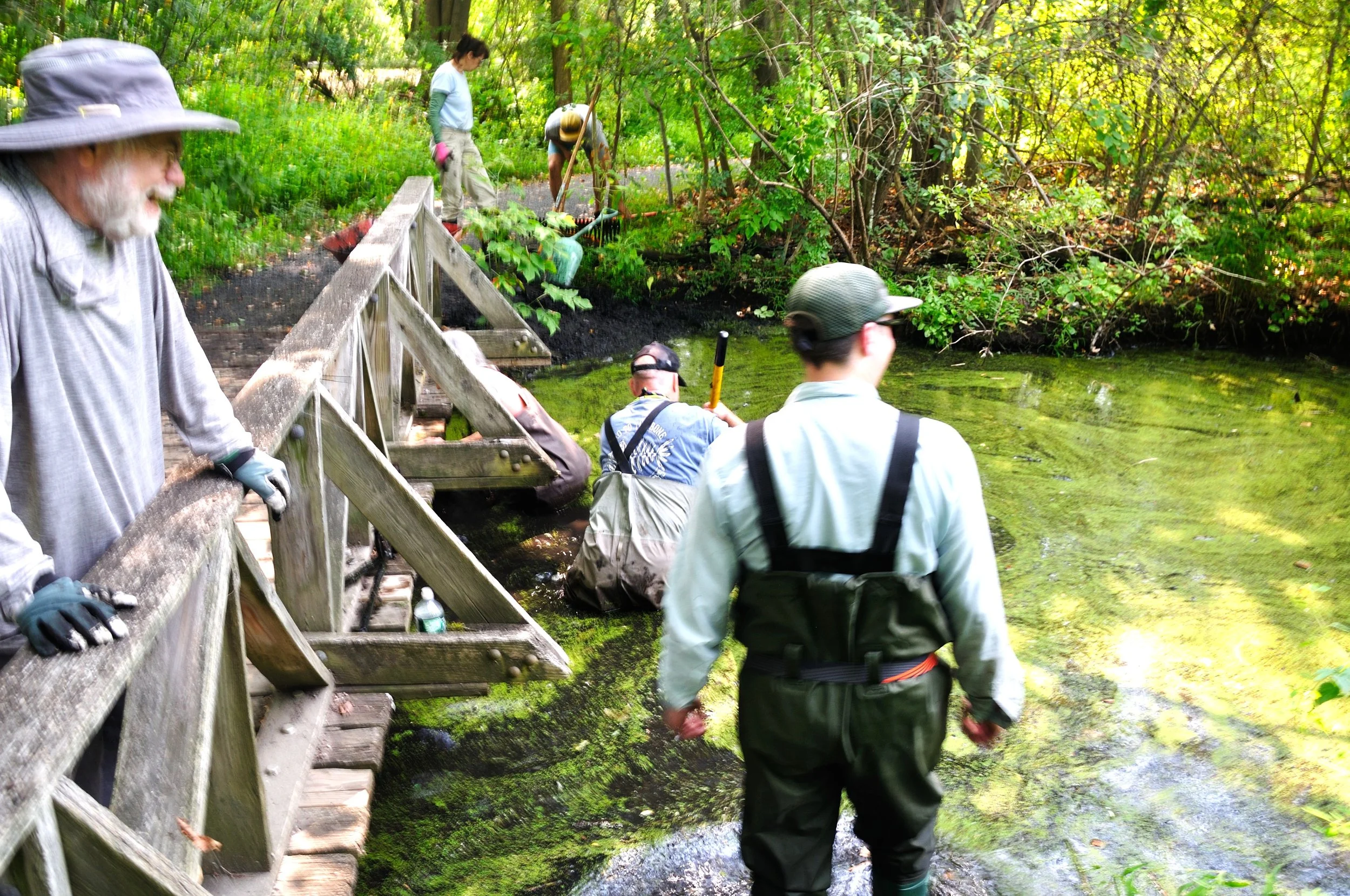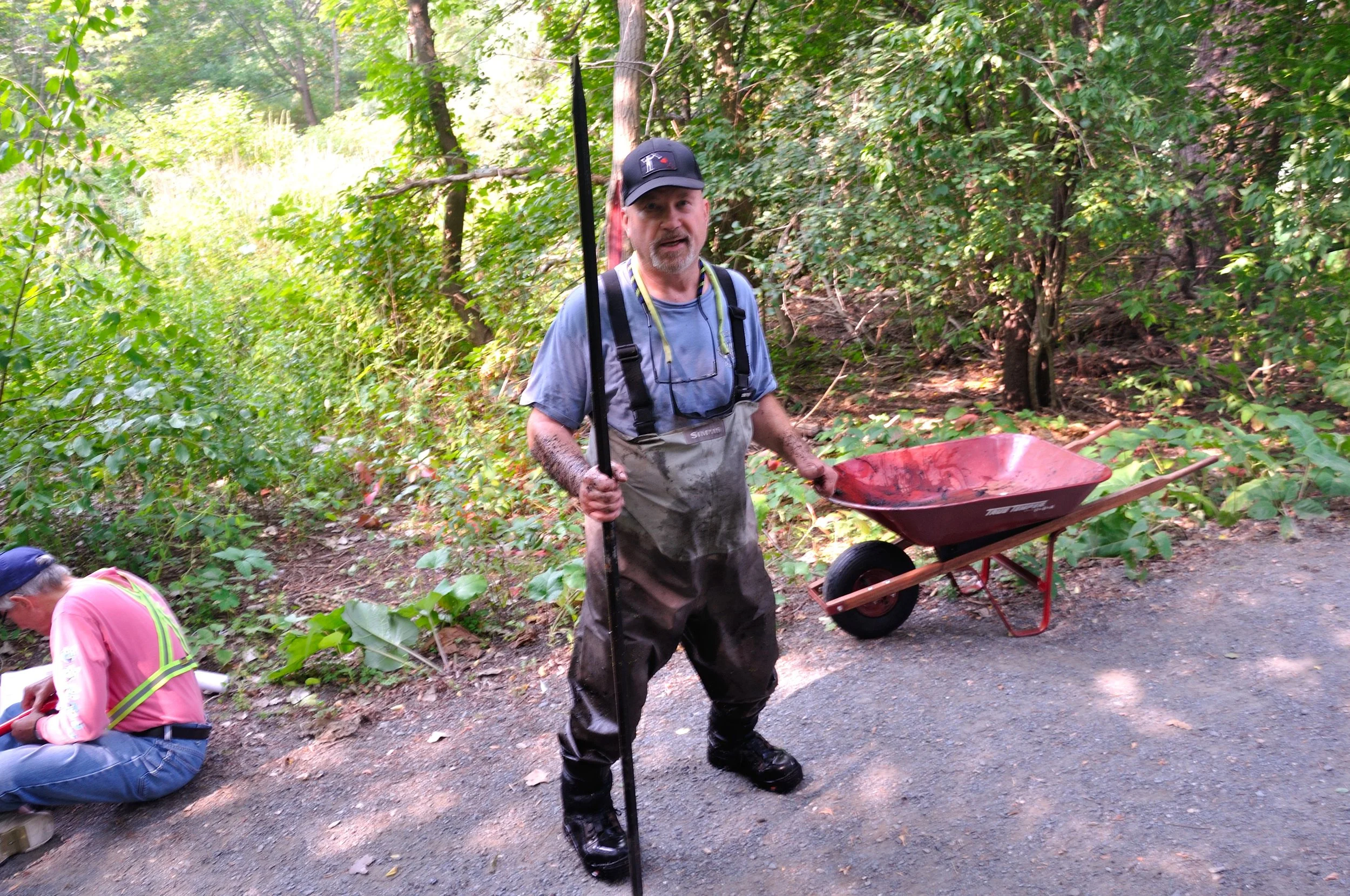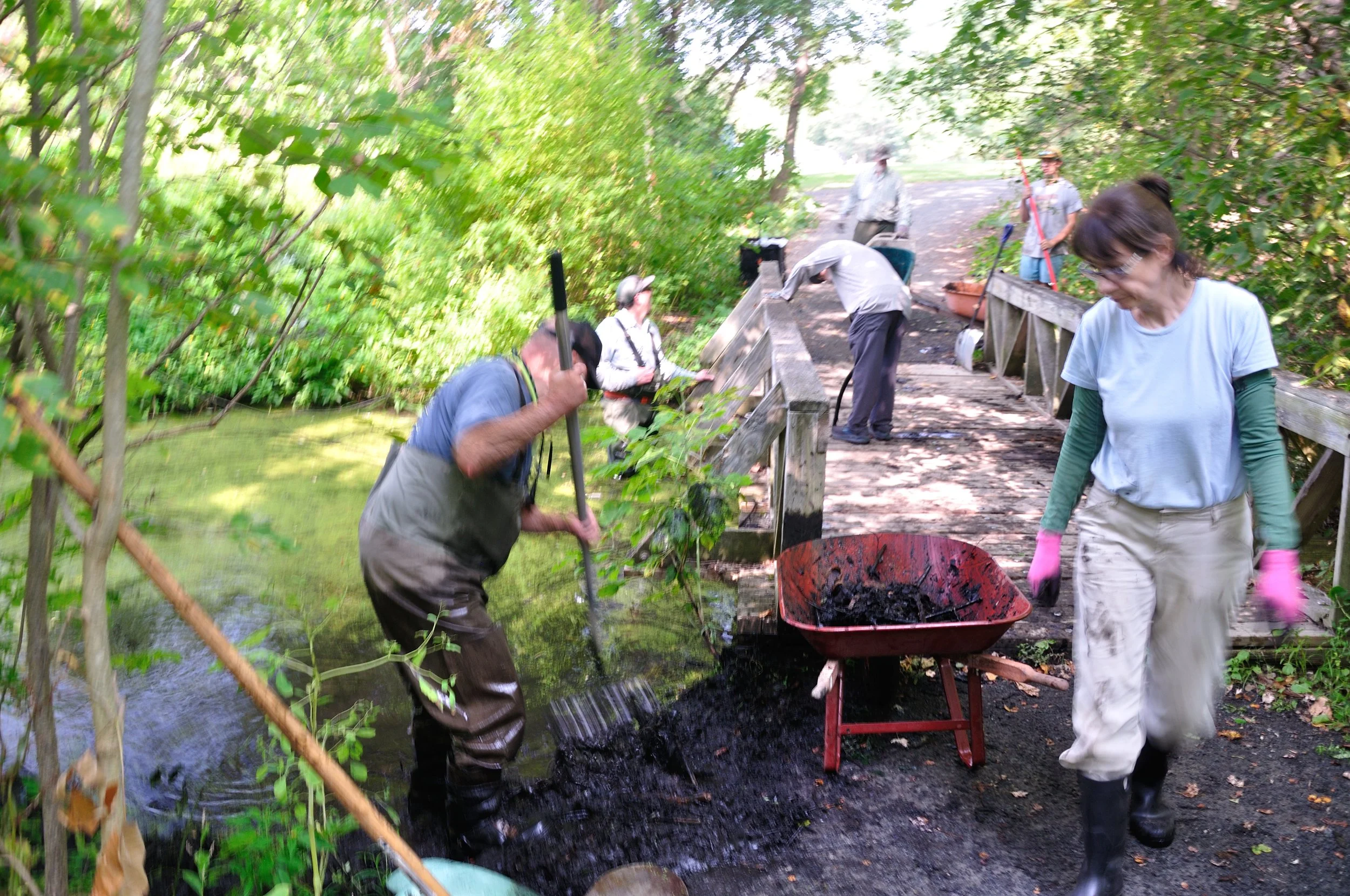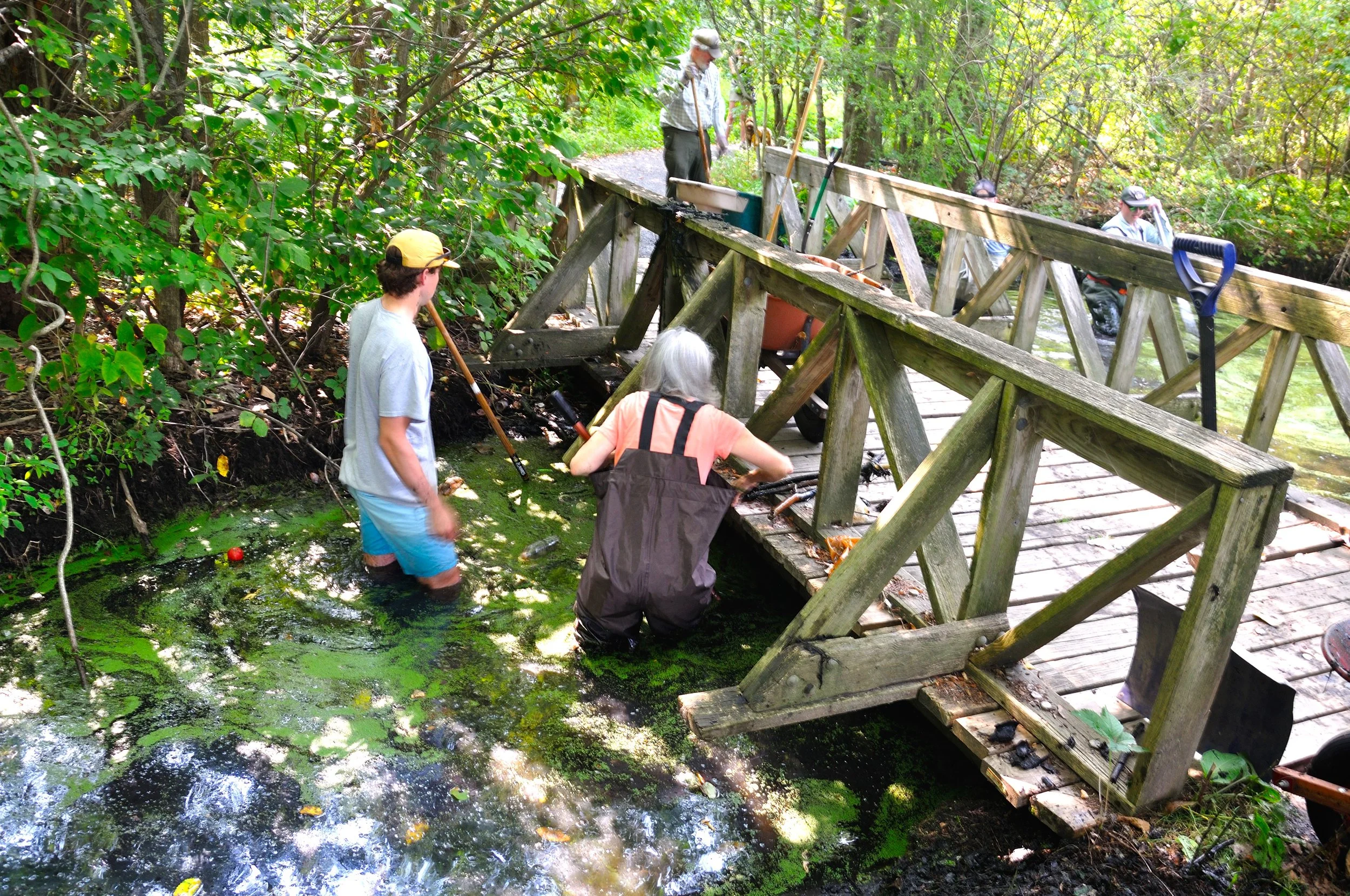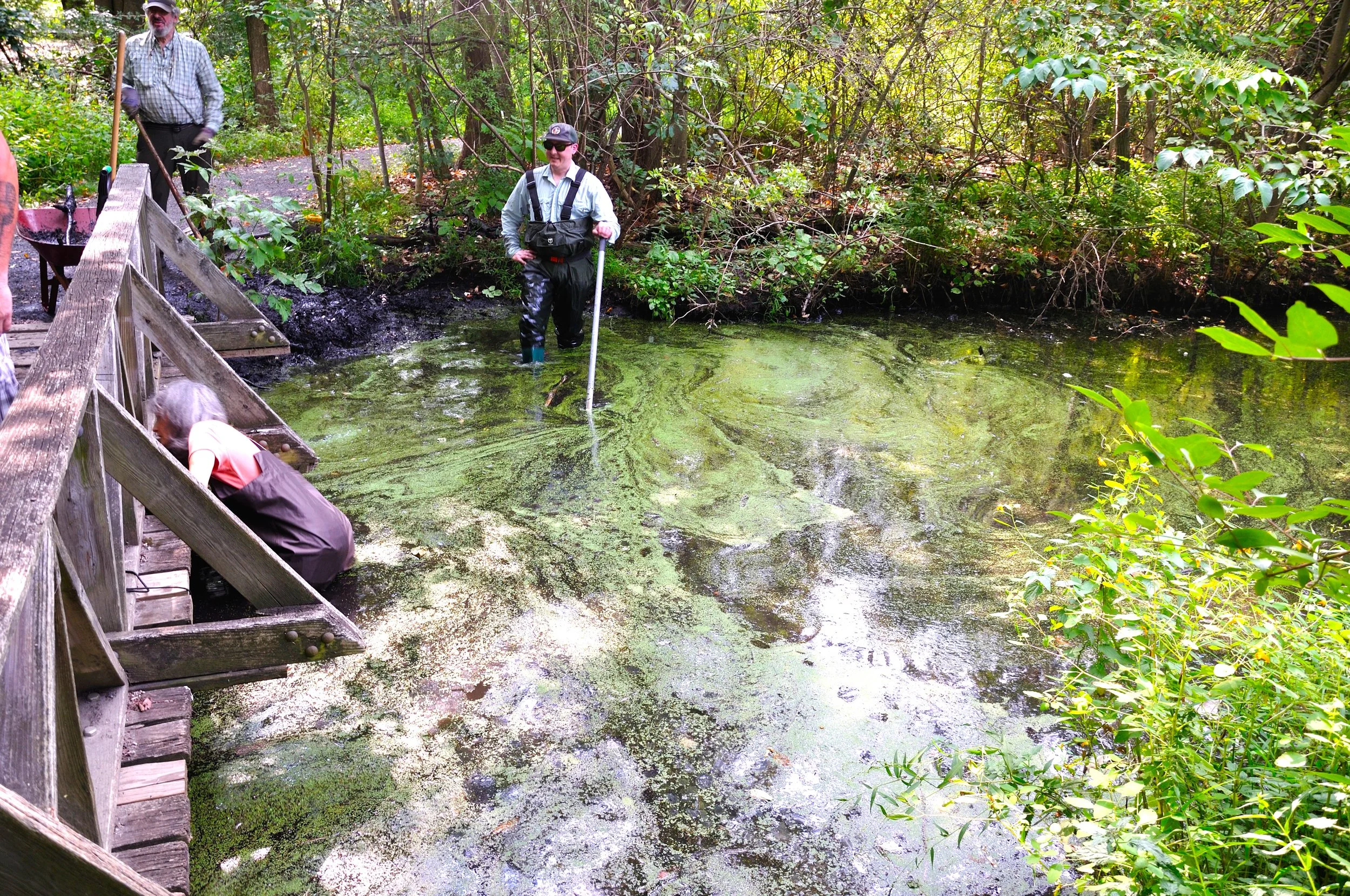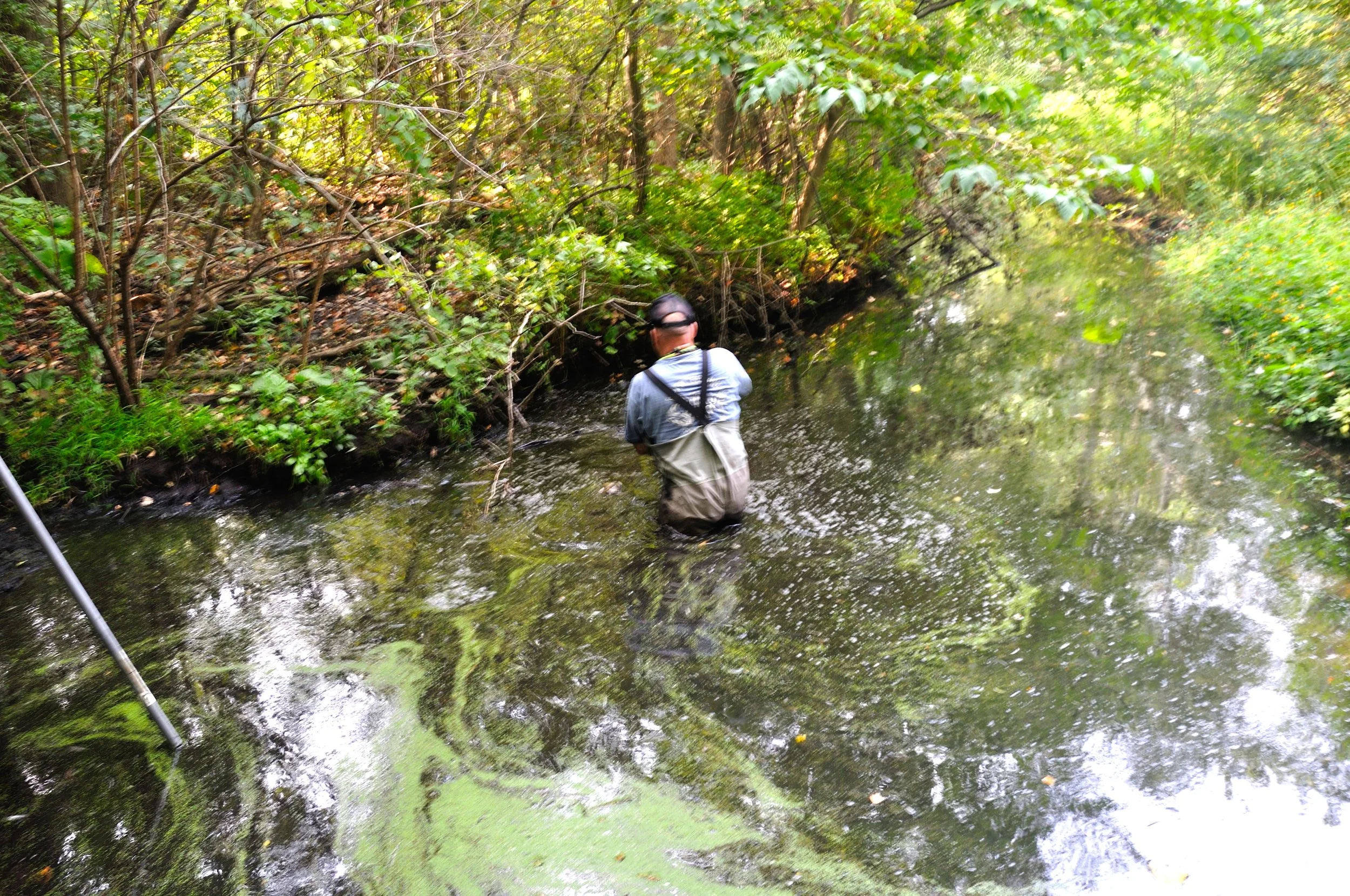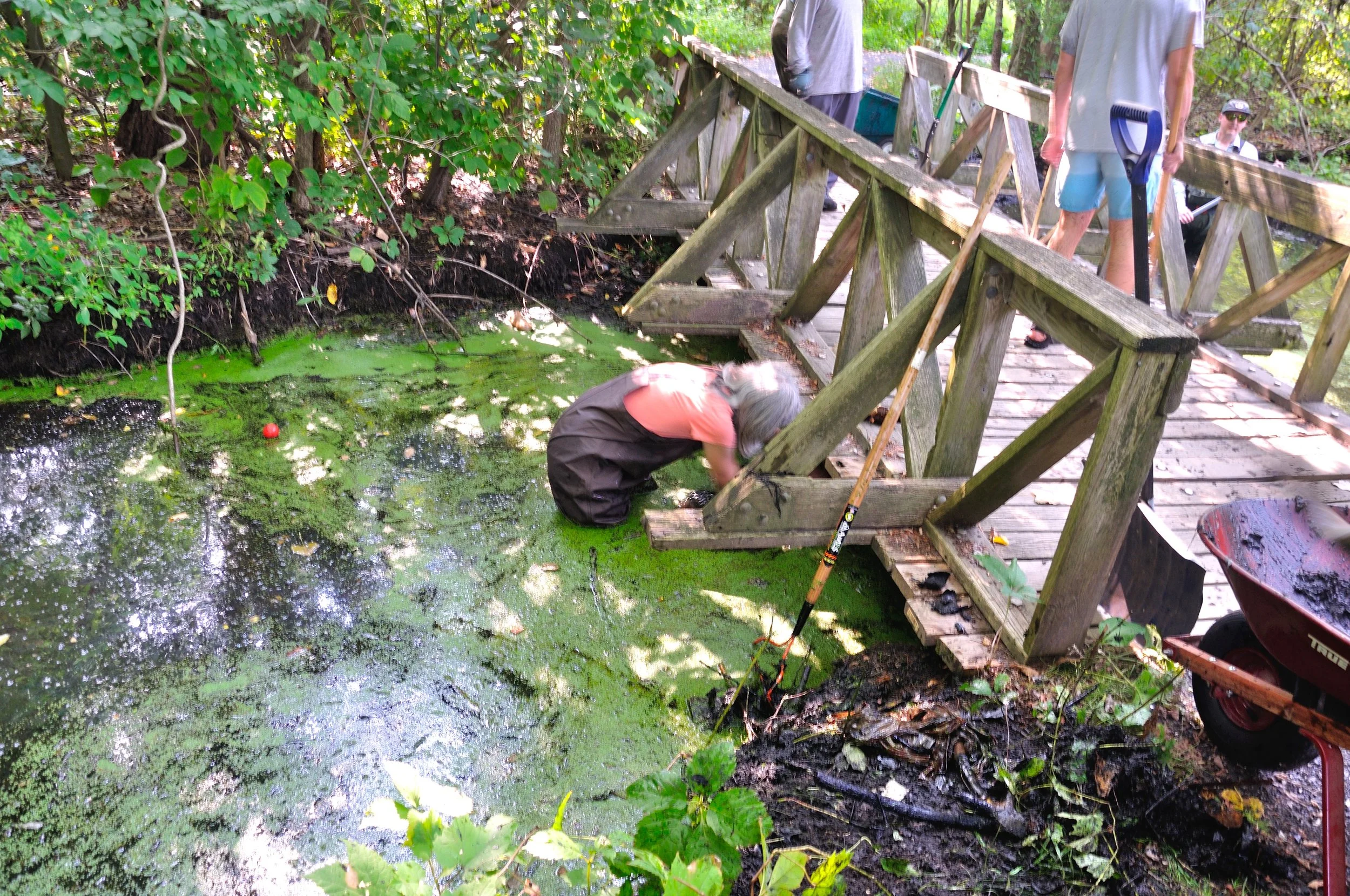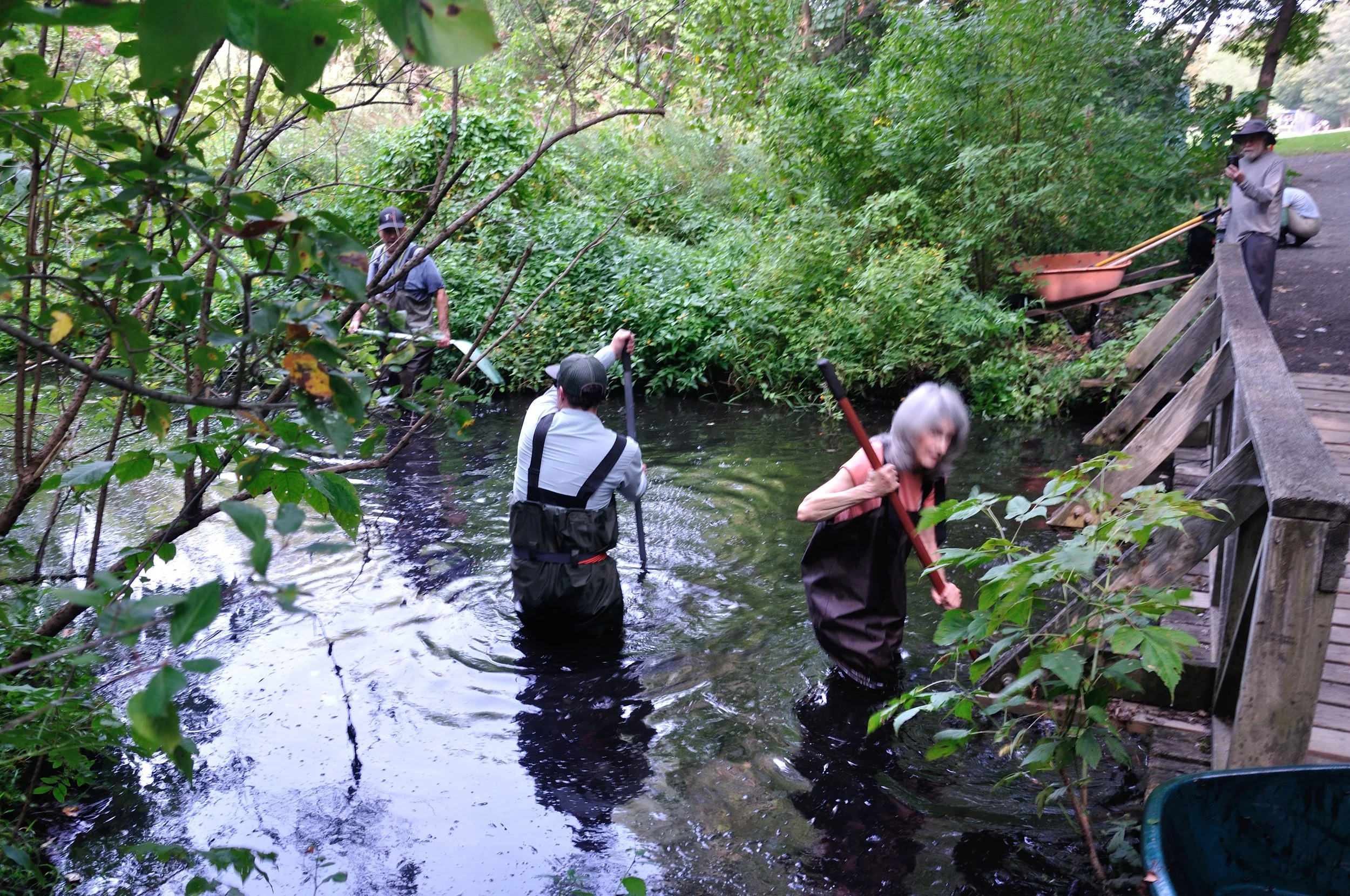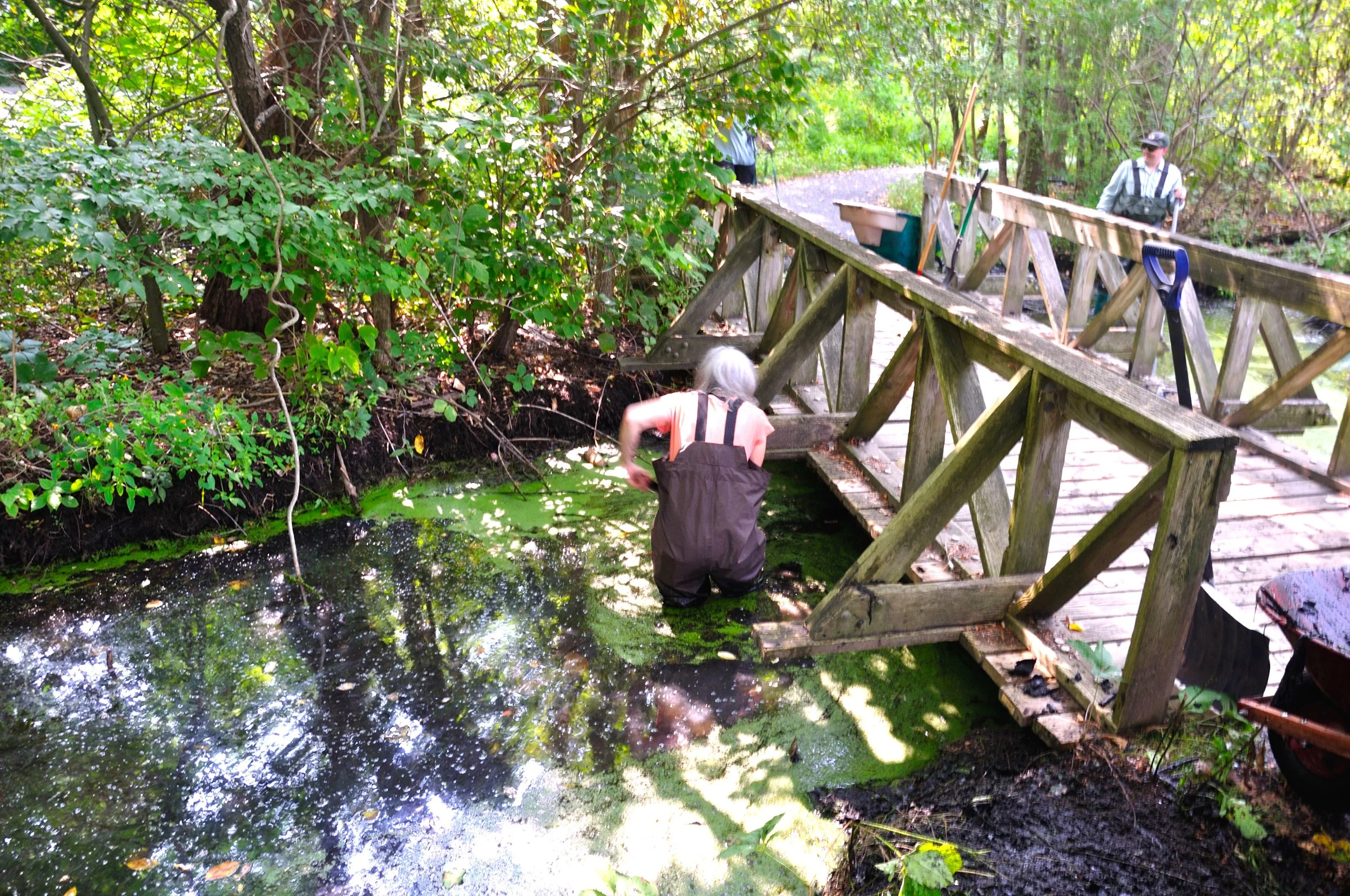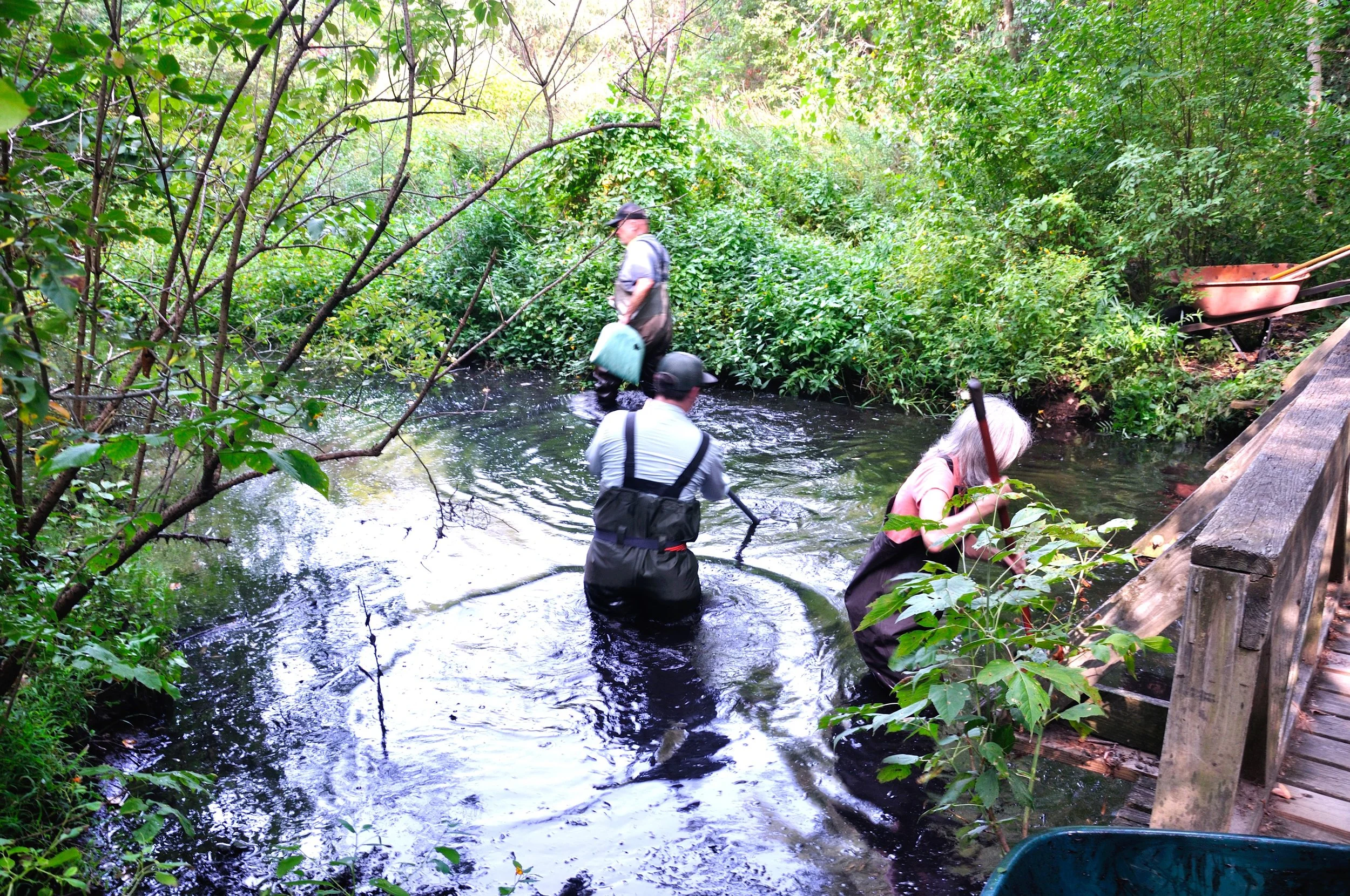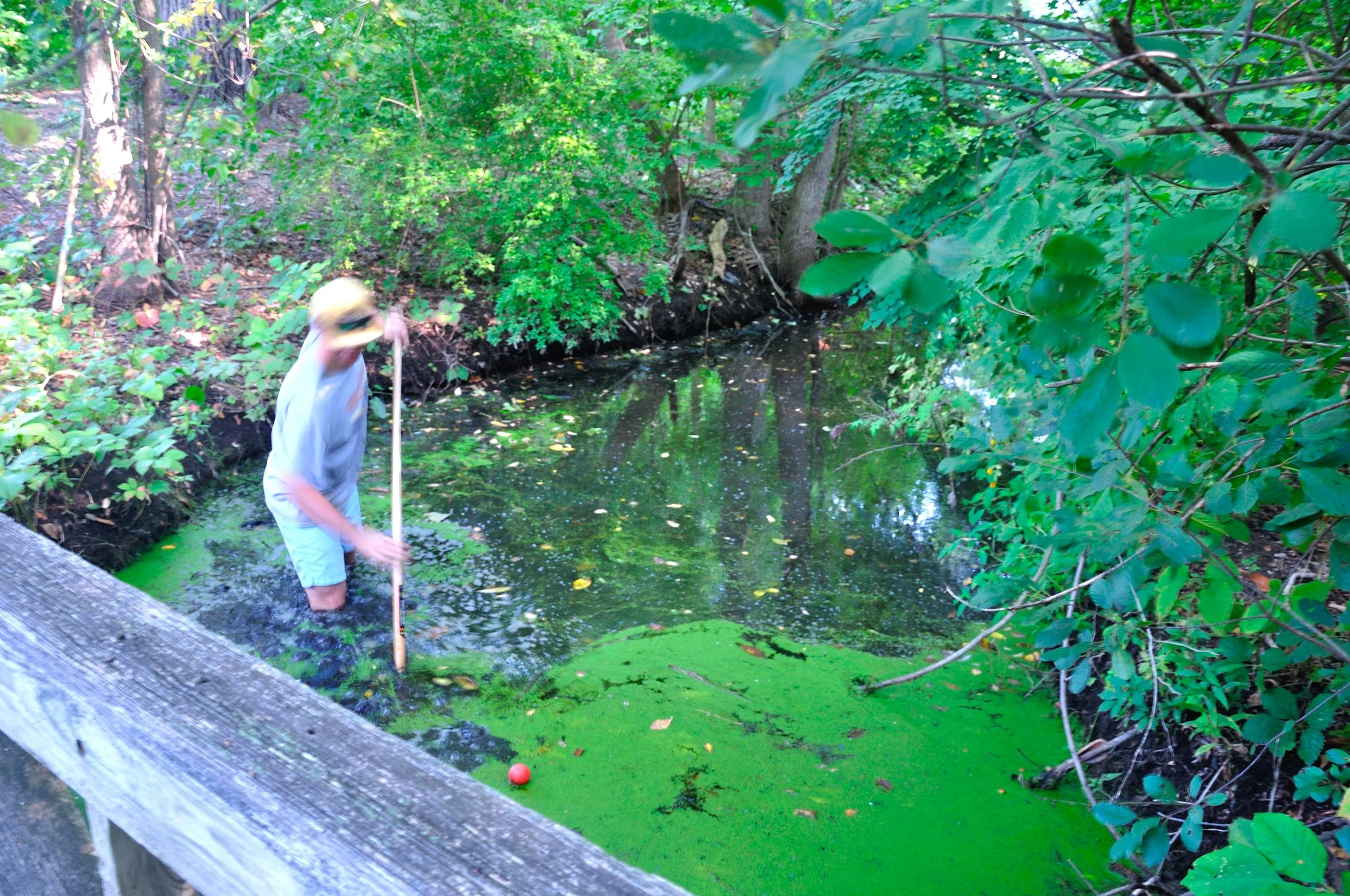Campaign Update: Clearing out Decaying Organic Matter and Debris at Cold Spring Brook...
Left to Right: Don Ross (FOCSP), Jeff Moore, Ben Heinze, and Paul Roell (MA NFC), and Jon Goldbergand Alan Nogee (FOCSP)…
NFC and representatives from Friends of Cold Spring Park and Newton Conservatives recently worked to remove accumulated decaying organic matter and other debris from under a footbridge on a tributary to Cold Spring Brook in Cold Spring Park. Our goal was to use hand tools and volunteers not mechanical equipment and paid professionals.
The project was more about proof-of-concept than actual impact as you cannot remove what took years to accumulate in just a few hours of manual work. It is also important to note that a decision not to clear from a culvert roughly 50 feet upstream of the bridge greatly lessened even the short-term impact. Leaving the organic matter intact upstream of the bridge while removing it from under the bridge would result in that upstream flushing down to the bridge the first time it rains. And while it hadn’t rained in weeks, the area got almost an inch of rain the day after we worked…
A stormwater culvert just upstream of the footbridge…
While the area immediately upstream and downstream of the footbridge had been dredged using mechanical equipment several years ago, under the bridge was not cleared. This impeded downstream flow allowing decaying organic matter to accumulate upstream and downstream of the bridge in a short period of time.
As decaying organic matter upstream and downstream of the footbridge increased, the water level has risen, and the depth of the water has decreased. This submerged the lower portion of the bridge and decreased the area’s ability to buffer stormwater which resulted in the stream going over and around the bridge on the side closest to the road.
A raft of duckweed and debris on teh upstream of the footbridge…
NFC observed a floating raft of unrooted aquatic vegetation (mostly duckweed), tree branches, litter (plastic water bottles and a ball), and oily film upstream and pushed up against the footbridge. There was very little floating matter or debris downstream of the bridge. This means that the footbridge was acting as a surface flow dam. We also noticed erosion on the road end of the bridge, indicating that at certain times the stream flows over and around the bridge.
One end of the footbridge appears to be 1-2-inches lower than the other. This is possibly due to erosion occurring during high water events. There is also evidence of erosion on the downstream side of the lower end of the bridge where overflowing water reenters the stream. The general design of the bridge also impedes the stream’s ability to effectively buffer high water.
NFC noticed that the current downstream of the bridge had all but stopped. Upon closer investigation, it was determined that a downed tree across the stream 75 feet or so downstream of the bridge was blocking stream flow and raising the water level. Several trees further downstream were having a similar impact on streamflow. As a result of limited rain, there is very little scouring occurring underneath the downed trees to help move water, organic matter, and debris downstream.
Before starting to clear organic matter and debris out from under the bridge, NFC moved the log noted above to help with stream flow. This dropped the water level above and below the bridge 1-2 inches. We also moved several other smaller logs and branches from the stream just downstream of the first downstream log to help move water through.
MA NFC board member Jeff Moore works to move a downed log that was slowing teh stream flow and raising the water level at the footbridge…
The group used steel garden rakes and a specialized aquatic rake to remove as much decaying organic matter and debris from under the bridge as possible. This included a plastic milk crate, plastic bags, and other litter, as well as years of accumulated decaying organic matter as it likely hasn’t been cleared since the bridge was built. As instructed, the debris removed from the stream was hauled out in wheelbarrows to a designated small hole in the woods nearby.
While unrelated to the planned stream work, NFC encountered an accumulation of old broken bottles in the woods 100 feet or so downstream of the footbridge and within 20 feet or so of the trail. NFC removed the glass for safety reasons and carted it to the bridge in a wheelbarrow where it was disposed of properly by Friends of Cold Spring Park.
As we expected, while the early raking yielded very positive results, the more we raked the less decaying organic matter we were able to remove. This was due partly to having a decreasing amount of organic matter present, and partly due to the higher degree of decay we encountered as we dug deeper down into the streambed. As the effort went on, the decaying organic matter became too fine to be raked out effectively.
The group demonstrated that decaying organic matter and other debris could be removed from Cold Spring Brook using hand tools. When we arrived, there was a large mat of floating duckweed, debris, and oily film upstream of the bridge. By the time we were done, the duckweed and film (we removed the debris) had moved under the bridge and begun to disperse downstream. Note before (left) and after (right)photos below…
Prior to removing organic matter and debris, there was no open air between the bottom of the bridge and the surface of the water. After clearing as much decaying organic matter and debris from under the bridge as we could, there was 2 inches of daylight on both sides of one end of the bridge, and 1 inch of daylight under the upstream side of the other. While we likely reduced it, we were unable to lower the water level enough to daylight the downstream side.
The overall reduction in regard to creating space between the surface of the water and the bottom of the bridge was limited by the design of the bridge, downstream blockage, and the amount of decaying organic matter we were unable to remove.
In order to have any notable and lasting impact, the area upstream of the bridge will need to be cleared. Once that has been done, additional hand-raking beneath the bridge and ideally more clearing downstream of it should be done to leave the area in a condition that would allow it to be maintained using hand tools. Clearing organic matter and debris at least once a year, ideally in the fall while the current year fallen leaves are on the surface of the water, would help lessen the accumulation of decaying organic matter. It would also help maintain some level of water depth which is good for fish as well as buffering stormwater to lessen flooding.
It would also be helpful to remove additional obstructions to streamflow such as downed trees downstream of the bridge. NFC believes these to be a limiting factor in regard to increasing flow and allowing the downstream movement of organic matter, pollutants, and other debris. What we found is that while we can improve the situation by removing organic matter, we can only go so far without addressing issues downstream…
Opportunities for Fish Habitat and Flood Mitigation Improvements:
The footbridge rests on, or very near, the surface of the water. The situation worsens as the amount of decaying organic matter increases or the stream flow increases. This is negatively impacting both fish and stormwater management. The situation could be improved by raising the footbridge 6-12 inches. NFC believes that this could be done using hand operated jacks and some sort of spacer placed between the bridge and what it is resting on today. The trail could then be raised using gravel to eliminate any step.

